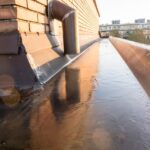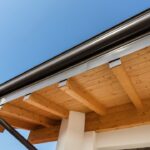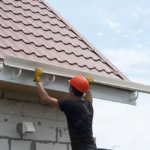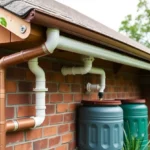If you’ve ever encountered a water leak or faced drainage issues on your roof, you might have heard of a curious term: roof cricket. But what is a roof cricket? In essence, it’s a vital element of roofing that plays a significant role in preventing water damage. It’s a small, peak-like structure designed to divert water away from areas that might otherwise accumulate moisture. Seen as a shining example of unmissable and approved technology in modern roofing, knowing about roof crickets can be a life-changing insight for homeowners and contractors alike.
Understanding the need and correct implementation of a roof cricket can make a tremendous difference in prolonging the life and integrity of your roof. As the demand for roofing knowledge grows, especially among homeowners interested in maintaining their homes, the importance of roof crickets cannot be overstated.

Why is a Roof Cricket Important?
Primarily, a roof cricket is a preventative measure that helps manage water on the roof. It’s especially crucial in areas where two surfaces meet at an angle, such as near chimneys or other roof protrusions.
The Purpose of Roof Crickets
Roof crickets are strategically designed to channel water away from the roof’s flashing and seams. This technological marvel ensures water does not pool, which can lead to decay or leaks.
Many homeowners face extensive damage when water isn’t diverted efficiently from critical areas. Thus, the importance of a correctly placed roof cricket cannot be underestimated. By directing water to gutters or other drainage systems, it safeguards your roof against unwanted moisture buildup.
Signs You Need a Roof Cricket
If your roof seems to hold water in specific areas, or if your chimney has visible water stains or mold, these may be signs that a roof cricket could be beneficial.
For those interested in implementing these devices, delving into resources that provide a deeper look into different roofing components can be insightful. Here’s a guide on choosing roof materials that align with having a roof cricket.
How Is a Roof Cricket Constructed?
Constructing a roof cricket involves precise architectural planning. Typically, they are crafted from the same materials as the roof itself to ensure longevity and consistency.
Materials Used in Building Roof Crickets
Common materials include asphalt shingles, metal, or even EPDM rubber, depending on the roof style and the cricket’s location.
For those interested in pursuing the installation of a roof cricket, understanding these material options as found in guides like EPDM roofing guide, can be a starting point.
Roof Cricket Design and Placement
The design of a roof cricket can vary greatly, but typically, it’s triangular and placed on the backside of a chimney. Correct placement is crucial to ensure function and efficiency.
Engaging with experts who appreciate the significance of structure detail, like those found through professional guides on construction company selection, can lead to finer craftsmanship in your installations.
Financial and Maintenance Considerations
Another aspect of roof crickets that homeowners must consider is their effect on home maintenance budgets.
Cost Implications of a Roof Cricket
The installation of a roof cricket can vary in cost, depending on the roof’s style and the materials used. It’s recommended to consult with a roofing specialist to get a clear quote.
While the upfront costs might seem like an added expense, the long-term savings from potential water damage repairs are significant. For more insights, check this informative cost review.
Maintenance of Roof Crickets
Maintenance involves regular inspections to ensure there are no clogs or wear. Regular roof inspections are advised to maintain structural integrity and effective drainage.
Understanding maintenance needs can prevent future problems, making this small construction detail a worthy investment.
The Impact of Roof Crickets on Homeowners
For homeowners, comprehending the intricacies of a roof cricket can lead to informed decisions that will benefit their home for years to come.
Enhancing Home Value
Homes equipped with proper drainage solutions like roof crickets can see an increase in property value, thanks to -added longevity and reduced risk of water damage.
Investing in such technology reflects a homeowner’s commitment to property care, making it an appealing feature for prospective buyers.
Impact On Home Energy Efficiency
Improper water management can lead to insulation damages over time, indirectly affecting home energy efficiency. A roof cricket plays a role in diverting these issues.
While roof crickets might not be the most visible part of a home, their practical benefits are vast and varied.

FAQ Section
What are the most common materials used for roof crickets?
The most common materials used are the same as those of the roof itself, such as asphalt shingles, metal, and EPDM rubber.
How often should roof crickets be inspected?
Regular inspections should occur at least once a year to ensure there are no developing issues, such as leaks or material degradation.
Can roof crickets add value to a home?
Yes, proper drainage systems add significant value to a home, protecting structural integrity and enhancing curb appeal for subsequent buyers.
This article contains affiliate links. We may earn a commission at no extra cost to you.








